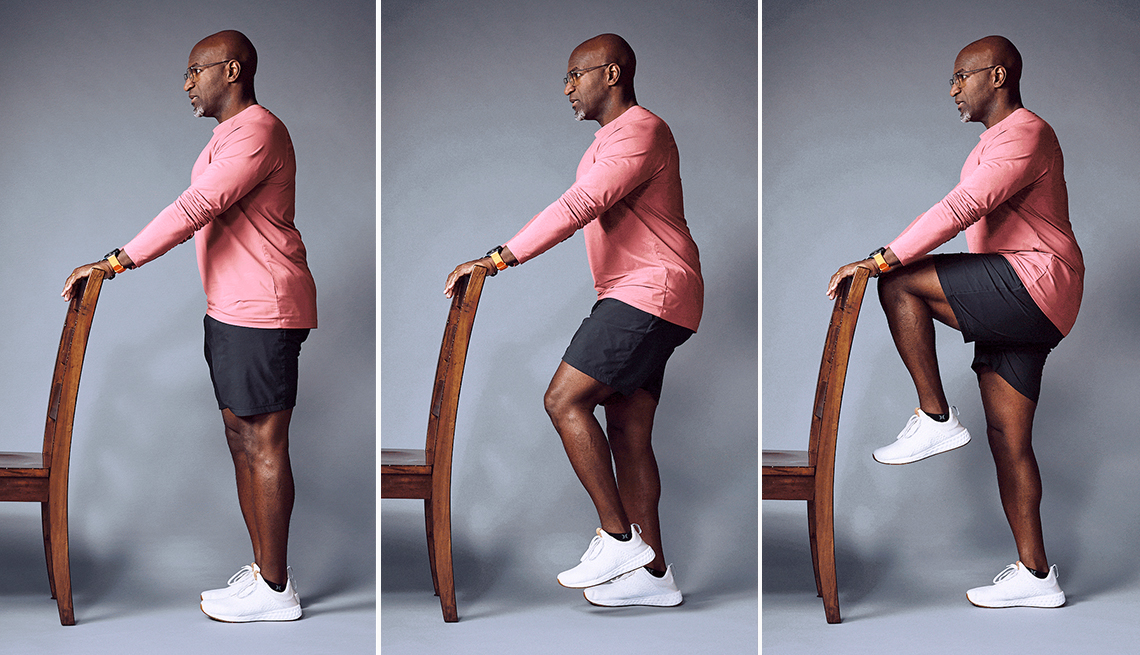Got a minute? 5 easy exercises to try now
- Select a language for the TTS:
- UK English Female
- UK English Male
- US English Female
- US English Male
- Australian Female
- Australian Male
- Language selected: (auto detect) - EN

Play all audios:

Though you know you need to exercise, you may feel like you don’t have the resolve, interest or time to get physically fit. You aren’t alone. Almost half of those 50 and older feel the same
way, according to an AARP survey. But building muscle and getting the physical activity that health experts say all adults need is easier than you may have thought. You can break movement
into short bursts that health experts call exercise snacks, and still get many of the benefits of exercising and lifting weights, without leaving your home or buying gym equipment. “When
experts say you should be getting 150 minutes of exercise a week and strength training two times per week, I think that can [sound] scary,” says Katie Wadland, a board certified geriatric
clinical specialist and owner of Healthy Aging Physical Therapy based in Wakefield, Mass. “So, break it down.” A FEW MINUTES, REAL RESULTS The benefit of exercise snacks has emerged from
years of research on short, intense exercises. In 2022, researchers in the United Kingdom published one of the largest studies to date in the journal _Nature Medicine_ on middle-aged adults,
showing how brief bouts of vigorous exercise can improve cardiovascular health. The study concluded that people between the ages of 40 and 69 who engaged in spurts of movement for at least
one to two minutes, three times a day, significantly reduced the risk of death from heart disease or cancer, compared with those who weren’t physically active at all. Another recent study
looked at how short, intensive exercise snacks might help to offset muscle loss during aging. Oliver Perkin, a University of Bath postdoctoral researcher in exercise physiology, led the
study of healthy but nonexercising adults and the impact of getting up and down from a chair for at least one minute, twice a day, over four weeks. “We saw some pretty encouraging results
in terms of increase in muscle size and strength in older adults,” he says of study participants. “We think the weight of the body on the person’s legs was enough to build strength.”
BUILDING MUSCLE With aging, the body’s processing of nutrients begins to slow, making it harder to build muscle tissue. On average, adults lose about 30 percent of their muscle power
between the ages of 50 and 70. Inactivity can hasten that muscle loss. Scientists say the brief bouts of activity encourage muscle fibers to grow and improves the efficiency of how muscles
use amino acids needed to repair and restore muscle mass. “We think, over time, activity snacks could delay the loss of muscle mass that occurs with aging,” says Daniel Moore, associate
professor of muscle physiology at the University of Toronto, who is currently leading a study on activity snacks and older adults.